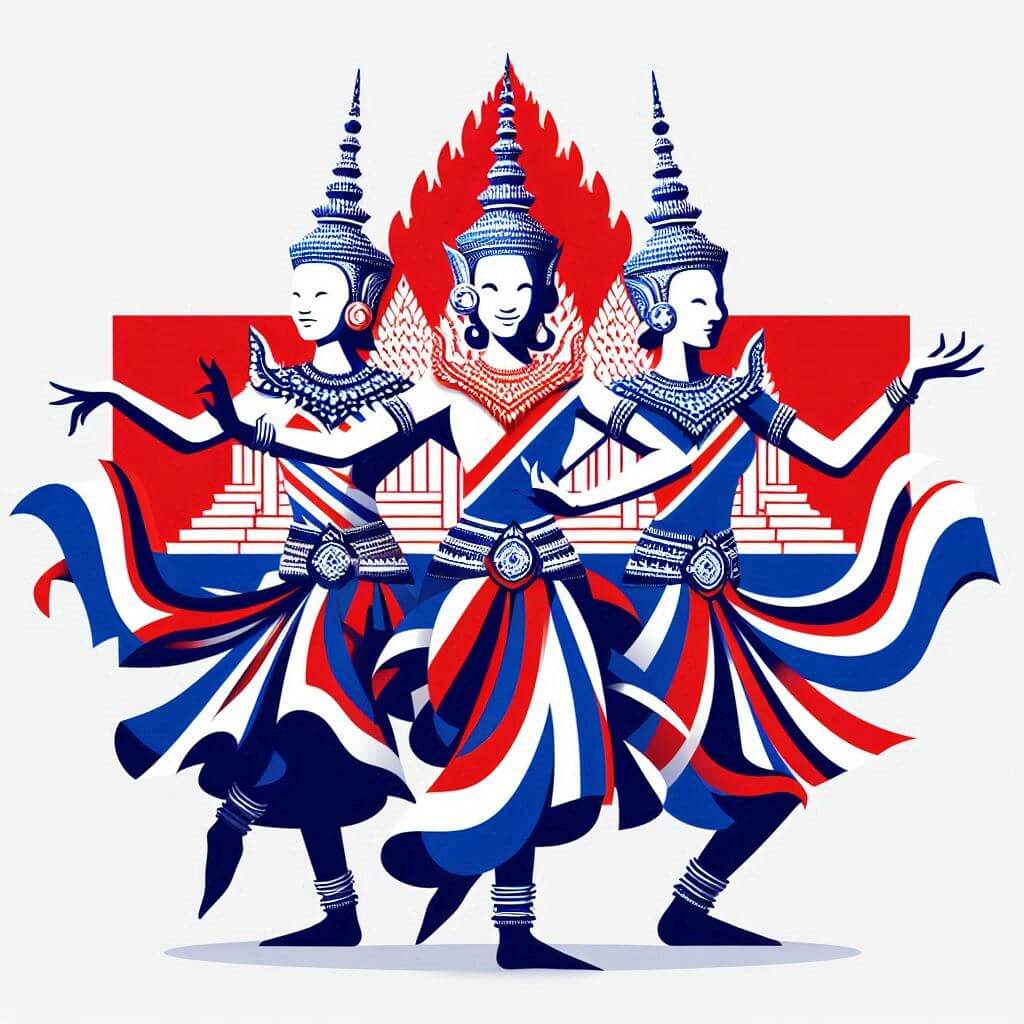The flag of Cambodia consists of three horizontal bands of blue, red, and blue, with a depiction of Angkor Wat in white centered on the red band. This unique design encapsulates Cambodia's rich cultural heritage, historical significance, and national identity.
Cambodia information
| National Flag Day | November 9 |
| Sovereign state | Yes |
| Official name | Kingdom of Cambodia |
| Capital | Phnom Penh |
| Population | 16,718,971 |
| Area | 181,035 km² |
| Currency | Cambodian riel (KHR) |
| Language | Khmer |
| Continent | Asia |
| Region | Southeast Asia |
| Subregion | Mainland Southeast Asia |
| Borders | Laos, Thailand, Vietnam |
| Timezone | Indochina Time (ICT) UTC+7 |
| Calling code | +855 |
| Top-level domain | .kh |
History of the Cambodian Flag
 The current flag of Cambodia was officially adopted on June 29, 1993, following the restoration of the country's monarchy and the end of the United Nations Transitional Authority in Cambodia (UNTAC) period. However, the flag's design has roots dating back to 1948 when Cambodia gained semi-autonomy from France. The flag has undergone several changes throughout Cambodia's tumultuous history, reflecting the nation's political shifts and struggles for independence.
The current flag of Cambodia was officially adopted on June 29, 1993, following the restoration of the country's monarchy and the end of the United Nations Transitional Authority in Cambodia (UNTAC) period. However, the flag's design has roots dating back to 1948 when Cambodia gained semi-autonomy from France. The flag has undergone several changes throughout Cambodia's tumultuous history, reflecting the nation's political shifts and struggles for independence.
Symbolism and Design of the Cambodian Flag
The Cambodian flag is rich in symbolism, each element carefully chosen to represent aspects of the nation's history, culture, and aspirations. The three horizontal bands of blue, red, and blue symbolize key values and characteristics of the Cambodian people:
- Blue represents liberty, the monarchy, and the Cambodian people.
- Red symbolizes the nation, the people's courage, and their revolutionary spirit.
The most distinctive feature of the flag is the white depiction of Angkor Wat, the iconic temple complex that stands as a symbol of Cambodia's rich architectural and cultural heritage. This representation on the flag not only showcases Cambodia's historical greatness but also serves as a source of national pride and identity.
Usage and Significance of the Cambodian Flag
 The flag of Cambodia holds profound significance as a national symbol, embodying the spirit of independence, cultural heritage, and unity. It is prominently displayed during national celebrations, ceremonies, and official events. The flag flies on government buildings, schools, and public institutions, serving as a daily reminder of Cambodia's identity and values.
The flag of Cambodia holds profound significance as a national symbol, embodying the spirit of independence, cultural heritage, and unity. It is prominently displayed during national celebrations, ceremonies, and official events. The flag flies on government buildings, schools, and public institutions, serving as a daily reminder of Cambodia's identity and values.
During important national holidays such as Independence Day (November 9) and Constitution Day (September 24), the flag is widely displayed across the country. It also plays a crucial role in international events, representing Cambodia in diplomatic missions, sports competitions, and cultural exchanges.
Interesting Facts About the Cambodian Flag
- Angkor Wat, depicted on the flag, is the largest religious monument in the world and a UNESCO World Heritage site, symbolizing Cambodia's ancient civilization and cultural legacy.
- The flag's design has roots dating back to Cambodia's independence era in the 1940s, with modifications made over the years to reflect evolving national sentiments.
- Cambodia is one of the few countries in the world to feature a building on its national flag, making it instantly recognizable.
- The current flag design is similar to the one used from 1948 to 1970, signifying a return to traditional national symbols after periods of political upheaval.
- The precise geometry of the Angkor Wat depiction on the flag is specified in Cambodia's constitution, ensuring consistency in its representation.